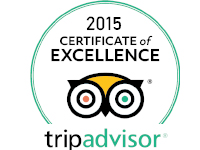
Ladakh is sometimes called 'Little Tibet'. It has a similar landscape and culture that bears this comparison. The Ladakh range starts from the Indus-Shyok confluence and the Zanskar range is the dividing line between the Indus and Zanskar valleys. The Great Himalayan range in its demarcates Ladakh from the Kashmir Valley and Himachal Pradesh. Two main districts comprise Ladakh: Leh and Kargil. Leh can be subdivided into Indus Valley, Nubra Valley, Shyok Valley, and Markha Valley. The main rivers are Indus, Zanskar, and Shyok; like the mountain ranges, these rivers run roughly E to W.
Ladakh today is one of the most remarkable adventure travel destinations and it can be divided into three main areas for trekking: Zanskar, with Padam as its central point; the area around Leh; and the Nubra/Shyok Valleys of the Eastern Karakoram. Most trails that commence from adjoining Himachal Pradesh, especially from Manali, converge by different routes at Padam. Then Leh is approached by different routes from Padam.
Today Ladakh is open to outsiders, or at least as open as its geography permits. No special permission is needed to enter Ladakh and within the region, you can travel around with relative freedom. Ladakh is full of amazing sights- strange gompas perched on soaring hilltops, dwarfed by snowcapped mountains; the barren, shattered-looking landscapes splashed with small but brilliant patches of green; ancient palaces clinging to sheer rock walls. But most of all it is notable for its delightful people-friendly as only Tibetans can be and immensely colorful. It’s an amazing place.
The road journeys to Ladakh starting at Manali is an unforgetful experience; crossing over a series of high passes, topped by the 5360 m high Tanglang-la - it is an adventure, offering spectacular scenery.
Ladakh offers numerous high-altitude treks, wild jeep safaris, white water rafting, mountain biking, and mountain climbing. Meeting its colorful people, and participating in their festivals are experiences to remember. Tours to monasteries are soul-enriching and awe-inspiring.
For nearly 900 years, from the middle of the 10th century, Ladakh was an independent kingdom, its ruling dynasties descending from the kings of old Tibet. The kingdom attained its greatest geographical extent and glory in the early 17th century under the famous king Singge Namgyal, whose domain extended across Spiti and western Tibet right up to the Mayum-la, beyond the sacred sites of Mount Kailash and Lake Mansarovar.
Gradually, perhaps partly due to the fact that it was politically stable, Ladakh became recognized as the best trade route between Punjab and Central Asia. For centuries it was traversed by caravans carrying textiles, spices, raw silk, carpets, dyestuffs, narcotics, etc. Heedless of the land’s rugged terrain and apparent remoteness, merchants entrusted their goods to relays of pony transporters who took about two months to carry them from Amritsar to the Central Asian towns of Yarkand and Khotan. On this long route, Leh was the midway stop and developed into a bustling entrepot, its bazaars thronged with merchants from distant countries.
The famous pashmina (better known as cashmere) also came down from the high-altitude plateaux of eastern Ladakh and western Tibet, through Leh, to Srinagar, where skilled artisans transformed it into shawls known the world over for their softness and warmth. Ironically, it was this lucrative trade that finally spelled the doom of the independent kingdom. It attracted the covetous attention of Gulab Singh, the ruler of Jammu in the early 19th century, who sent his general Zorawar Singh to invade Ladakh in 1834 AD. There followed a decade of war and turmoil, which ended with the emergence of the British as the paramount power in north India. Ladakh, together with the neighboring province of Baltistan, was incorporated into the newly created state of Jammu & Kashmir. Just over a century later, this union was disturbed by the partition of India, as a result of which Baltistan became part of Pakistan, while Ladakh remained in India as part of the State of Jammu & Kashmir.
Recently on 31st October 2019, Ladakh became a Union Territory of India and separate itself from Jammu and Kashmir.
Ladhak surely is one of the best travelers destinations in the world.
Best time to visit:
Ladakh is open for tourists throughout the year, while the best period for tours and treks is from June to October. Most of the trekking routes are closed after November due to heavy snowfall at high passes except the Liker to Kahltsey (Sham) trek. The best period for Chadar trek is from January to Mid-March
Permit and Passport:
Tourists don't require permits for Leh; however, all foreigners are required to register at Drass, Rumtse, and Sarchu if they are traveling by road. Those traveling by air get themselves registered at the airport. The tourist is required to get a permit for restricted areas like Tsomoriri, Tsokar, Pangong Lakes, Dhahanu, and Nubra Valley, which can be obtained through registered travel agencies. Make sure to carry six photocopies of the permit while traveling, to submit at the Checking points.
Credit Cards:
Credit Cards are accepted in most places however in hotels they normally love to get cash either in Indian currency, USD or EURO.
On Jeep Safari:
Never leave your vehicle except in designated areas. Keep noise levels to a minimum and encourage others to do so. Use this time to keep your eyes and ears open, soaking in all the charm and character of the areas. Take permission before you click a photograph of anyone. Don't take photos if they ask for money.
Summits and treks:
Depending on the level of difficulty and height of the trek please pack carefully and accordingly. Before any trip, we will provide a complete checklist of useful items you must carry. Equipment, tents, etc are all provided by us and on request, we can also organize high altitude clothing so you may travel lighter. All treks are fully escorted.
Responsible tourism:
As resources are limited, please use as little water and power as possible. Do not leave litter lying around and carry all rubbish away with you. Apart from defacing the scenery, it can also cause injury or poison the local fauna of the area. Put all campfires out thoroughly. Common sense and courtesy should prevail in all your actions.
First Aid and Medical Treatment:
Always seek expert advice when in doubt. It is sensible to carry with you a small first aid kit with essentials like antiseptic cream, bandages, insect repellent, paracetamol, etc. All our guides are trained in first aid and carry their own kits. All camps also keep first aid kits with managers having done their first aid courses.
Laundry:
Most hotels and lodges offer laundry service, which is usually the same-day service and cheap. However, clothes will be vigorously washed and so it might be better for you to wash delicate items yourself.
Communication:
Leh and Kargil towns have worldwide direct dial facilities, besides a General Post Office and a Central Telegraph Office. The J & K Tourism Department has installed its own wireless radiophone network linking interconnected field stations with its offices at Leh, Kargil, and Padum and base stations in the Tourist Office at Delhi, Jammu, and Srinagar. The field stations are supplemented with mobile sets used to bring remote locations and mountain bases within the ambit of the communications network during the tourist season. The facility is mainly used to monitor the movement and welfare of tourists in the State, it is especially useful in ensuring timely rescue arrangements for tourists falling ill or meeting with accidents.
Cameras:
There is a small charge for still cameras at all wildlife sanctuaries and a larger one for video cameras. Colour films are widely available but please check the expiry date, storage conditions, etc before buying. More specialized supplies should be brought with you and as you will be driving on dusty trails inside the parks, lens cleaning materials are invaluable.
Money:
The Indian Rupee is the only currency accepted in Ladakh. A mixture of cash and traveler's cheque provides the best degree of security and flexibility. US Dollars and Pound Sterling are the easiest currencies to exchange with American Express, Thomas Cook, and Visa being the most accepted traveler's cheque. All your valuables, passports, etc can be left at your lodge or hotel for safekeeping.
Souvenirs and Gifts:
As is in most countries the prices offered to you will not be fixed and higher than the actual value. Most parks have agents aggressively wanting to sell their products. It is best to consult your guide or lodge before making any purchase so we may be able to get you the right price and direct you to genuine suppliers with quality products instead of hawkers selling cheaper imitations. Most Lodges have their own souvenir shops with genuine and fixed prices.

Dearest
Mingma! Julay!namestey! hope you are in good health. Sorry to write you lately. Our trip to Thiland made us busy so we were unable to write you back. Mingma the trekking was well organised and I had a wonderful time with you.. . Ladhak is a wonderful place and your guiding made it much much better. We all are very happy and eager to visit your country sikkim next time.
The way you describe sikkim, it really seems to be a nice place. We will promote for you wherever we go. Thanks for your support when the chips were down..
Convey our regards to Jigmee,Arun and Horse man. Hope we will meet then again.
Harry,Dorris Michael and Gracy
Switzerland 2009

Hello
Max, hope you are doing fine business. We are thankful for your warm guidance and wonderful trekking arrangements in a short time. Mingma the food was excellent. We will return to sikkim with friends and family someday. We would no doubt recommend your company mountain tours and treks to all of our friends who want to visit India and specially sikkim and Darjeeling.
Adam and wanda
Netherland. 2010
 Dear
Dear
Hi
Mingma, thanks for your mail. We are still in kerela and doing familiarization trip. Its very hot out here.
Mingma your trekking arrangements was good and we had no hesitation in recommending your company. Your guide and cook was very good. We had more than enough varieties of food everyday. We surely hope that you will do well.
Well take care and best of luck
Andrew, Roben and David
Switzerland 2011 feb
 Dear
Dear Dear
Dear







We are there to help you .